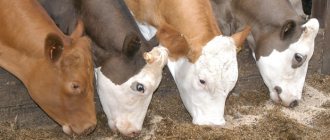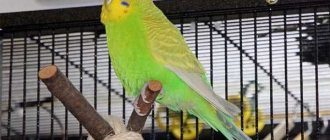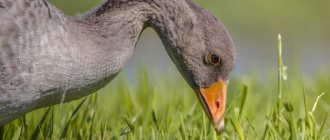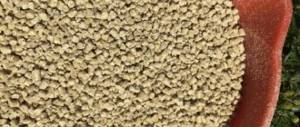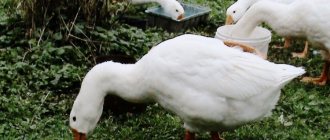The ferret is a carnivorous animal that feeds on birds, hares, eggs, small reptiles and amphibians. In the summer, when there is a lot of all kinds of living creatures in the forests and fields, ferrets prefer to live and hunt there. But with the onset of winter, especially cold, ferrets can make their way closer to human habitation and get food in barns and stables.
General characteristics of the predator
Ferrets belong to the mustelidae family of mammals. Ferrets have an elongated body and are particularly flexible and agile. These animals are excellent at climbing the tallest trees and digging deep holes. Males are slightly larger than females.
The habitats are very different, it depends on the type of animal. Ferrets often move closer to human habitation. There are usually two types of ferrets found in Russia - the steppe white and the forest black. Under favorable conditions, ferrets lead a sedentary lifestyle in their own territory. And only hunger can push them to human habitation, where there is always food for them.
The basis of any ferret's diet is food of animal origin. They hunt and eat birds, rodents, insects, reptiles and even poisonous snakes. A ferret will never miss a nest with eggs. He will drink them all and destroy the nest. Large individuals can become a real threat even to hares and muskrats.
Thanks to their agility and endurance, ferrets can pursue their prey for a long time. But, as a rule, they prefer to watch for prey near its own hole. The peak of hunting occurs at night, but if night hunting is not successful, the ferret will do it during the day. Ferrets are not attracted to plant foods.
Ferret: description of the animal
There are several varieties of ferrets, which differ little from each other. It should be noted that each variety has its own characteristics.
Appearance
The ferret is a small animal whose appearance is distinguished by its flexibility and grace. Despite the fact that the animal’s legs are quite short, they are muscular and strong. This animal can not only climb trees and dig holes, but is also an excellent swimmer. In addition, the animal has unique mobility, so the animal cannot sit quietly for a single minute.
The color of this small predator can be varied, ranging from light shades to dark, almost black. In this case, the torso is always darker compared to the rest of the body. The coloring of the muzzle is such that the folding pattern looks more like a mask. The animal's fur is relatively long, but fluffy, with the hairs at the base being somewhat lighter than at the ends.
Interesting fact! With the onset of cold weather, at the end of the molting process, the fur of ferrets acquires a special shine and becomes quite beautiful.
Males, although slightly larger than females, reach a length of no more than 60 cm. The peculiarity of these animals is their long and very fluffy tail.
Behavior and lifestyle
Ferrets are nocturnal predators, so their peak activity occurs at night. Moreover, this applies equally to both wild ferrets and domesticated ones. Ferrets lead a sedentary lifestyle, becoming attached to their habitats, and leave their territories only in the event of unforeseen situations, for example, natural disasters.
These animals live in burrows that they dig. They arrange their homes using dry leaves and grass. If they come across an empty hole, for example, a fox hole, then they can easily take it. If necessary, ferrets can easily move closer to humans and inhabit barns or basements.
To find food for themselves, ferrets often appear in villages and villages. After such visits, people are missing poultry. By nature, ferrets are quite active and during waking moments they cannot sit still for even a second. And yet the nature of the behavior depends on the sex of the animal. Females are more cheerful and playful, and their intelligence is noticeably higher than males, so they learn much faster. Males are calmer and more diligent, but they become strongly attached to humans.
We recommend reading: Chamomile - cultivation
How long do ferrets live?
Being in the wild, these animals live a maximum of 3.5 years, since dangers await them everywhere.
Important point! Even a life expectancy of 4 years requires care for the health of the animal, with proper nutrition. If you keep a ferret at home, the animal can live 2 times longer, or even 10 years, although such cases are considered very rare.
Ferret lifestyle
Ferrets are naturally active, curious, and have an excellent memory. The latter quality is precisely what contributes to the fact that the predator will come again and again to the same chicken coop, where he has already successfully obtained food once. Hunting is not particularly difficult for a ferret, since by nature it has an excellent ability to swim, climb trees, run fast and dig the ground.
At the same time, in the wild, ferrets are very aggressive. They have their own enemies. For example, they are afraid of foxes, wolves, large snakes and large birds (owls, golden eagles). Thanks to their agility, ferrets often escape from being chased, and they also have a secret weapon. This is a special liquid that they spray during severe fright. Ferrets have special glands under their tail that produce this unpleasant-smelling liquid. This substance will scare away any enemy.
Ferret habitat
The ferret is a predator. It settles almost everywhere, but prefers to live on the edges of the forest, so that there is a body of water nearby. Ferrets live in burrows that they make themselves, or they occupy burrows made by other animals and abandoned by them.
The ferret is difficult to find in dense forests; the animal does not like too dense forests. Animals prefer small forests or groves located near human habitation. The ferret does not like to wander from place to place. This is what distinguishes males: each of them has its own strictly defined territory and it is extremely undesirable for them to appear in a foreign area. Females are more loyal in this regard: they can live anywhere and not feel much discomfort. A male can walk about 5 km per night - this suggests that their hunting grounds are very extensive.
Ferrets' burrows are not very deep, usually there is one tunnel and a nesting site at the end. Ferrets can make their shelters in abandoned burrows of badgers and foxes. Sometimes a ferret settles right next to a person. Here he will probably have a nest in some barn, but in a secluded place. Usually, forest ferrets climb into barns, because steppe ferrets try to avoid human habitation.
The steppe ferret lives almost in open areas. In terms of area of settlement, the steppe ferret surpasses any other steppe animal. In the steppes, ferrets make abandoned gopher burrows for themselves. Such a hole can save the animal from both the summer heat and the winter cold. There is no way to live without a hole in the steppe: you can easily become the prey of another, larger predator. Steppe ferrets do not have a strictly defined territory.
Reproduction and offspring
Sexual maturity in ferrets occurs quite early, maximum within 1 year of life. The breeding process of ferrets takes about six months, and the beginning of the process depends on living conditions. Steppe ferrets begin to take care of the birth of future offspring already in March, and forest ferrets - somewhere in mid-spring or even early summer.
These animals do not have signs of a mating ritual, so the mating process takes place vigorously and one might think that the ferrets are fighting. As a result of this process, males can cause minor injuries to females. This is where the role of males in the appearance of future offspring ends, since they do not take any part in raising the future generation.
It is important to know! The female carries her future offspring for one and a half months. From 4 to 20 puppies are born, depending on the number of births the female has. The puppies weigh within 10 grams and are absolutely helpless and blind.
The female feeds her cubs with milk for a maximum of 3 months, but already at the age of one month meat appears in their diet. After about a month, babies' eyes open. After stopping milk feeding, the puppies begin to hunt together with their mother. After six months of life, the offspring begins their own life, independent of their parents.
We recommend reading: Quail breeding as a business
Vital signs of a ferret in the barn
Conversations that a ferret can destroy many chickens in a barn in one night are not groundless. This is true. Once in the barn, the ferret begins to hunt. Moreover, he does not eat the whole of a single caught chicken. He strangles them one by one and drinks their blood, partially eating them. This is a harmful trait in ferrets. Moreover, having entered into the excitement of the hunt, the ferret will not be afraid even of a large turkey or goose. However, there are some signs by which ferrets reveal themselves even before the destruction of the bird. They can be found if you carefully monitor the behavior of the barn's inhabitants.
These signs include:
- Chickens show unusual timidity: they huddle together on the upper perches, and are in no hurry to go down even when the owner gives food. This can only mean one thing: they have already sensed that a predator is wandering somewhere nearby. This sign can be 100% confirmation that there is a ferret somewhere nearby.
- The unusual crowding of birds indicates that they are very frightened.
- Even at night in the dark you can hear screams. With its sensitive hearing, the bird hears the predator’s attempts to get inside, so the noise immediately begins. Even the appearance of a person does not stop this alarmed cry.
- If it is winter, then you can easily find characteristic footprints in the snow. Experts can already understand from the tracks that a ferret has been in the chicken coop or has just tried to get there.
When the ferret has already been in the barn, it will not go unnoticed. Smothered chickens can be found everywhere. The ferret first drinks blood and eats the head and paws of the victim. Already in the presence of the above-described signs, measures need to be taken, since any night the ferret can get inside - it’s just a matter of time. If alarming signs appear, the chickens should be removed to a safe place and measures should be taken to get rid of the ferret. If the ferret has already killed the bird, a new one is not introduced until the predator is caught.
Ferret danger
It is precisely in the fact that the destruction of birds is usually massive that the main danger of the ferret lies. Even if he doesn’t destroy everyone at once, he will return to his beloved barn again. If something frightens him one night, he will still come the next night. A small hole is enough for a ferret to get inside. The peculiarity of the skeleton is such that if the head penetrates, the ferret will crawl through completely.
Even rats are not as dangerous as ferrets. There are cases when there were aggressive roosters among the birds and they could destroy the predator themselves, but such situations are very rare.
Important! The ferret attacks aggressively, in one leap. He strangles the victim with his paws, and then begins to suck the blood.
The greatest danger is that if the ferret is not caught, he will never forget the way to the hen house.
What is the danger of ferrets, weasels and martens?
The particular danger of the predator is the mass destruction of poultry. Having entered the poultry house, the ferret, having eaten, begins to store food for future use.
Be sure to read:
How to make a perch for laying hens with your own hands correctly: drawings, photos, videos, dimensions
The entire chicken flock often becomes prey. The hunting pattern of ferrets, weasels, and martens is the same: fishing continues as long as there is a living bird in the chicken coop.
If the predator is scared off, the hunt will continue the next night. It is important for the farmer to prevent such attacks.
Chicken coop after a visit from a predator
The skeletal features of the ferret and weasel allow the animals to easily penetrate through small holes and narrow cracks, significantly complicating the protection of the chicken coop in the habitats of these predators. It is easier to protect the poultry house from rats.
Important! Large aggressive roosters can kill ferrets while protecting the hens. The rooster is powerless against experienced hunters who regularly hunt poultry.
Ferret habits
In order to more successfully fight the enemy, you need to study his habits. Ferrets in this case are no exception; a person must know the characteristics of this predator in order to more effectively combat it. In particular, there are two unusual habits:
- The ferret will staunchly defend its territory, and it does not matter at all what kind of enemy invaded it. Having lost its territory, a ferret can quickly say goodbye to life, since it will have nowhere to hunt and hide.
- Ferrets have a naturally weak heart. It happens that a predator caught in a trap dies from an excessive release of adrenaline into the blood - its heart simply cannot cope with such a load.
Traps
Any device for catching a ferret must be installed at night; this is important, given the nocturnal lifestyle of this predator. The traps must be placed so that the bird cannot fall into them even when panic begins in the barn due to the appearance of an uninvited guest.
Before loading the trap, it should be treated with a special composition that will destroy the repellent human odor. This can be slaked lime or even ordinary manure. If the dug hole is already clearly marked, then the trap is placed right next to the exit from it.
The trap should be sensitive and bait should be placed there. It could be bird blood. You can also catch ferrets using a strong rat trap; it can deter the predator. In order to give the rat trap additional weight, it needs to be mounted on a large board. It is better not to place small rat traps: the ferret will turn them over and easily free himself, and subsequently it will be easy to bypass such traps.
Pets
Cats and dogs can handle a ferret in some cases. And even if they don’t catch the predator, at least they won’t let him run the chicken coop in peace. Not every cat or dog can manage to catch a nimble ferret, but sometimes they succeed. Hunting dogs and cats that crush rats are good in this regard. Such animals are not afraid of predators; hunting is a natural process for them. Such pets must be vaccinated against rabies.
But, unfortunately, not every pet is accustomed to hunting: in most cases, the animal itself will be afraid of the predator. A good option against predators is domestic ferrets. On their territory they can catch and kill a wild animal. Poultry is of no interest to domestic ferrets, since they do not suffer from hunger. But even a pet should not be allowed into the chicken cage.
Homemade trap
In order to quickly take measures to catch a predator in the chicken coop, many farmers make homemade traps. These include:
- A bucket/box raised above the ground at one end, under which a support is placed. Some kind of bait is placed under it that can attract the ferret. The effect is designed for the ferret, interested in the bait, to knock down the support and be covered with a bucket or box. This simple method is quite productive, but there is one significant drawback: the ferret can get out of there. It costs him nothing to turn the bucket over.
- A cage with a vertically falling door. The mechanism is also quite simple: the door is connected by a rope to the bait, and as soon as the ferret begins to engage with the bait, the door falls. In order for a predator to come to the bait, you need to put a piece of meat dipped in blood.
Such methods are effective. But after the ferret is caught, no less caution should be exercised. First of all, this is due to the fact that ferrets are often carriers of rabies. You need to be very careful when removing them from the trap. They have powerful jaws. It is not difficult for them to bite through the skin and joints. Therefore, you need to act in thick mittens or gloves that cannot be bitten.
If the bite could not be avoided, and the ferret tightly clung to the hand, it should not be torn off. You need to try to pinch his nose and then insert a stick between his teeth - you can then use it to open his jaws.
Important! After being bitten, you must go to a medical facility and get vaccinated against rabies. The animal must be sent to a veterinary laboratory.
If a ferret is caught in a trap, a person is faced with the question of whether to kill it or release it. Here everyone is free to do as they please. But if the idea arises of releasing the predator, it must be taken as far into the forest as possible so that it cannot return.
Universal homemade ferret trap
For this trap you will need a regular cage with strong bars. Wood is a better material as metal can scare away animals. The door should drop vertically when closed. A mechanism resembling scales is attached to the upper beams or branches in the forest. A door is tied to one side of the lever, and the bait is hung on the other edge in the center of the trap. As soon as the ferret unhooks the meat from the rope, the cage will close.
In this way, animals are caught on farms, in chicken coops and barns. A similar design can be used in the forest, but the smell of meat may attract other predators.
Repellent
In order to discourage the ferret from visiting the chicken coop, you can use repellers. These are devices that create an uncomfortable environment for predators:
- Electronic devices operating on the ultrasound principle. If such a device is turned on in the room, the predator experiences panic and its only desire is to escape as quickly as possible. He will panic until he leaves the area covered by the device. The uniqueness of such devices is that other animals and birds do not experience the slightest inconvenience from their operation, just like humans. But there is a drawback here: ferrets quickly get used to such inconvenience and cease to feel fear.
- Low frequency repellers. The devices were developed in such a way that predators would not develop addiction. But this device also has a drawback, and a significant one: animals and birds located in its area of action experience severe stress from its influence.
- Light repellers with motion sensors. The action is simple: when a predator appears, the motion sensor is triggered and the flashlight turns on. The ferret, frightened by the bright light, runs away from the chicken coop. There is also a drawback here: the motion sensor covers a certain area. If the ferret does not hit it, the sensor will not work.
How to scare away a ferret, marten, weasel
Electronic devices have been developed that create ultrasound. It causes fear in the predator and forces the animal to leave the territory covered by the repeller.
Live trap diagram
The device does not bother other animals. The person doesn't hear him. The disadvantage of an ultrasonic device is the possible addiction of the predator, the disappearance of the scaring effect.
Low frequency repellers are not addictive. The sound always seems to be the animal signal of an approaching earthquake. However, the device has a negative impact on pets that sense low-frequency sounds. Chickens experience stress when the appliance is operating.
There are light repellers that have a motion sensor. When fixing a moving object, the device turns on a flashlight, the light of which, frightening, drives the animal away from the chicken coop.
The disadvantage of the light repellent method is the inability to completely cover the entire area around the building, so persistent ferrets will be able to enter the chicken coop through an unlit area. A light repeller, additionally equipped with a sound function, is more effective.
Be sure to read:
Waterer for chickens and other birds: 5 great DIY options
Traditional methods
Previously, people tried to fight predators from the forest on their own and used improvised means for this:
- The walls of chicken coops were smeared with tar; it was believed that this smell should repel small pests, like ferrets. But if an animal comes from a tunnel underground, then the walls coated with tar will not become a hindrance for it. In addition, not every ferret dislikes the smell of tar.
- It used to be that goat skin was used to repel ferrets. But this method can rather be attributed to preventive measures. If you hang the skin in a sealed room, it may have an effect.
Ferret repellent methods
There are several ways to scare off an animal without catching it. To do this, you can use special electronic devices that emit signals at low frequencies. These sounds do not cause any inconvenience to human hearing, but predators tend to leave such a place as quickly as possible. The fact is that animals classify low purity as an approaching earthquake. The disadvantage of this method is that it disturbs dogs and poultry.
You can also use a light source with a motion sensor. As soon as the ferret approaches the house, such a lantern can scare off the predator. However, such a repeller cannot cover the entire perimeter around the coop, so the ferret can always sneak into the blind spot. Very often, lighting devices are also equipped with sound signals to ward off predators. This method of scaring is suitable for a dacha or country house, since it does not require human control.
Chemicals
Poison baits are another way to control ferrets. In order to prepare them, you need to use protective equipment - a mask and gloves. As bait, you can use the same carcasses of hens and chicks that the ferret has already killed. They should be placed where chickens and other domestic animals cannot reach them.
To prevent the bait from going rotten, you need to treat it with compounds containing substances that promote mummification. A strong poison for baiting rats is suitable as a poisonous filling. Such products can be found on sale in the form of liquid formulations or dragees, as well as lozenges. To lure them, they are provided with a strong smell, to which the ferret will probably not remain indifferent. The disadvantage of this method is that even if the ferret has already been destroyed, the person will not know about it. Most likely, the poisoned animal will run back to its hole and die there.
Traps for the safe capture of animals
There are several types of traps that will allow you to catch a ferret alive. Some of them are offered in specialized stores, but most can be made independently.
In addition to the trap itself, you will need the following list of items to catch a wild predator:
- gloves made of thick fabric;
- canvas or camouflage clothing;
- meat as bait;
- infusion of wormwood.
Overalls are needed to protect against sharp teeth and claws of the animal. Ferrets always resist human capture and can bite through the skin. The bait most often is killed mice or chicks, which predators feed on.
These animals actively react to the strong smell of blood. The trap should be treated with wormwood to repel the human smell.
Preventive actions
It is difficult to fight a ferret, so you need to take all measures to protect the chicken coop from the visit of a dangerous predator:
- The chicken coop needs to be sealed. It is advisable to take care of this already at the stage of its construction. Then you can build a special monolithic concrete foundation; you need to lay sheets of iron under the boards. The inside of the chicken coop walls can be covered with metal mesh, and all cracks can be securely sealed with cement and broken glass.
- Particular attention should be paid to ventilation - a ferret can easily penetrate through it. Therefore, at the construction stage, it is necessary to lay ventilation holes no lower than at a height of 2 m from the ground.
- Make secure doors to the chicken coop that close tightly at night. This is the easiest way to access this room. In the summer, chicken coops are often not closed, and the ferret gets inside without hindrance.
- There should be no piles of unnecessary rubbish in the chicken coop - this is an excellent hiding place for a predator. Even during the daytime he can easily hide there. Every corner of the room should be clearly visible, this minimizes the likelihood of an ambush for a predator. Any piles of rubbish both indoors and around it on the street are an excellent opportunity to hide for a nocturnal predator. He can even arrange a temporary shelter for himself in a pile of old boards or in the trash. At night he will get out of there and operate in the courtyard.
- The chicken walking area should be surrounded around the perimeter with a concrete fence, which is buried about half a meter into the ground.
Other predators
In addition to ferrets, other living creatures can enter the chicken coop or buildings in the yard:
- Weasel. The principle of her hunting is approximately the same: she can easily penetrate through the smallest hole or make a tunnel. She can hunt at any time of the day. The chickens' behavior is the same as after a ferret's visit. But there is one difference: after the victim is strangled, the weasel tears it apart. It is almost impossible to catch a weasel. She is cunning and agile, and also merciless. The weasel is a rare guest in the chicken coop. Only severe hunger could push her to take such a step. There are cases where weasels even attacked dogs and cats. Of all the predators that parasitize chicken coops, weasels are the most ferocious and aggressive. But it must be added that even after getting into a chicken coop, a weasel will extremely rarely immediately begin to strangle the chickens. First of all, her attention is attracted by the rats and mice that live there. Only if they are not there, and hunger cannot be satisfied in any other way, will the hunt for chickens and other living creatures begin.
- Marten. The method of penetration into outbuildings is exactly the same as in previous cases. The marten is also a nocturnal guest. But unlike the ferret and weasel, after strangling the victim, it will eat it whole. The marten does not always come to farmsteads due to severe hunger. Often she will simply visit there if there is a suitable yard nearby with easy access to the chicken coop. In addition to animal food, the marten also eats some fruits and berries. Perhaps that is why she does not carry out massacres in chicken coops, but kills only as many birds as she can eat at one time.
- Fox. Ventilation holes, rotten boards, tunnels - all these are used by the fox to get into the chicken coop or rabbitry. Fox activity near humans is observed only in winter, when there is catastrophically little food in the surrounding forests. Foxes come to the farmstead at night or in the morning. The animal is capable of completely eating a couple of chickens, but it will strangle the rest. He may also take a couple of pieces with him and return several more times for his prey.
A guard dog, large enough not to be afraid of the predator, can be a good defense against a fox. In addition, the dog must be smart and trained so as not to start hunting chickens itself. In addition to chickens, a fox may be attracted to the site by the presence of buckets of slop, manure heaps, and the smell of fish - this is the most favorite aroma for foxes. Therefore, if foxes live in your area, you need to carefully monitor the accumulation of food debris in the area so as not to attract a predator.
